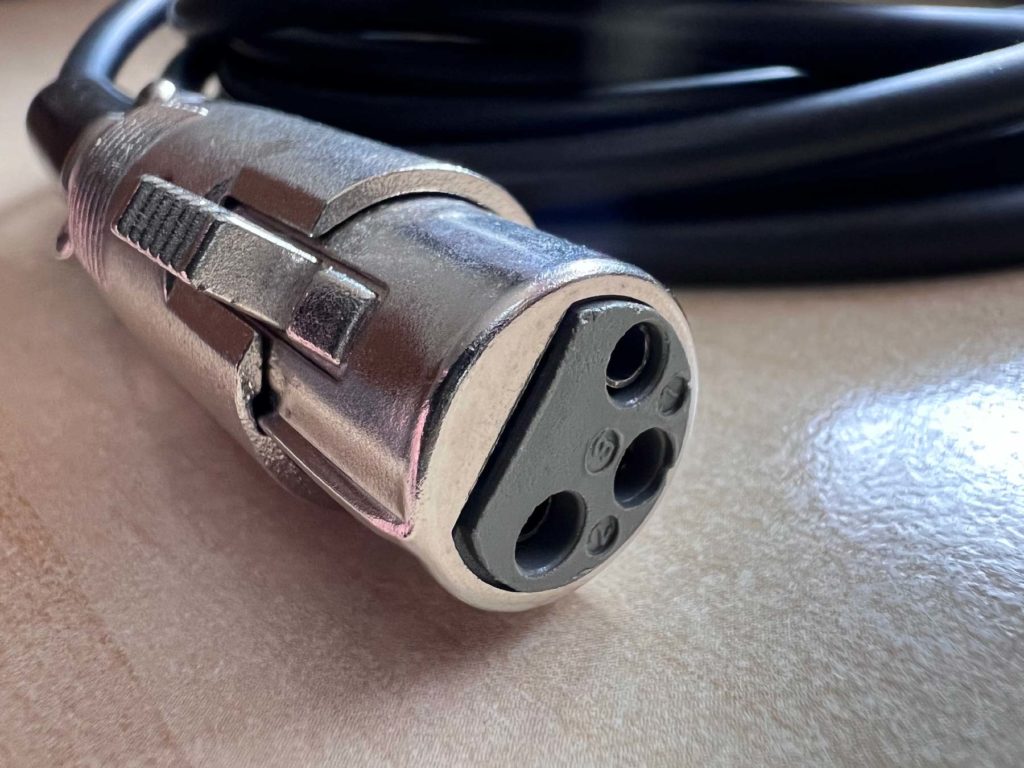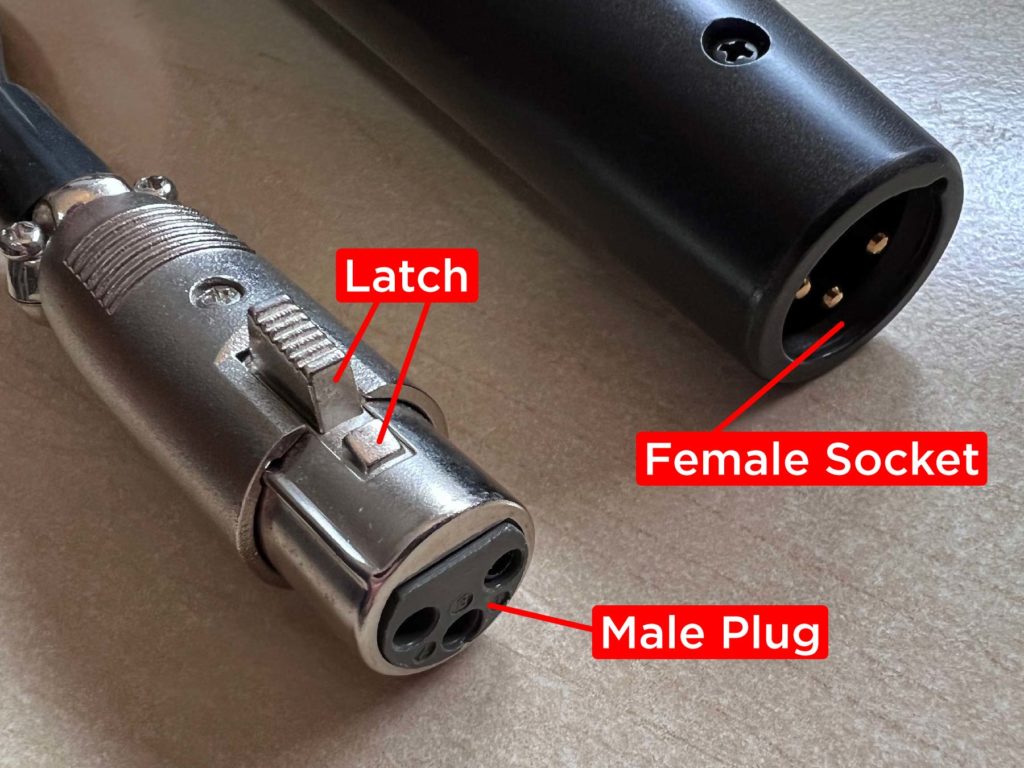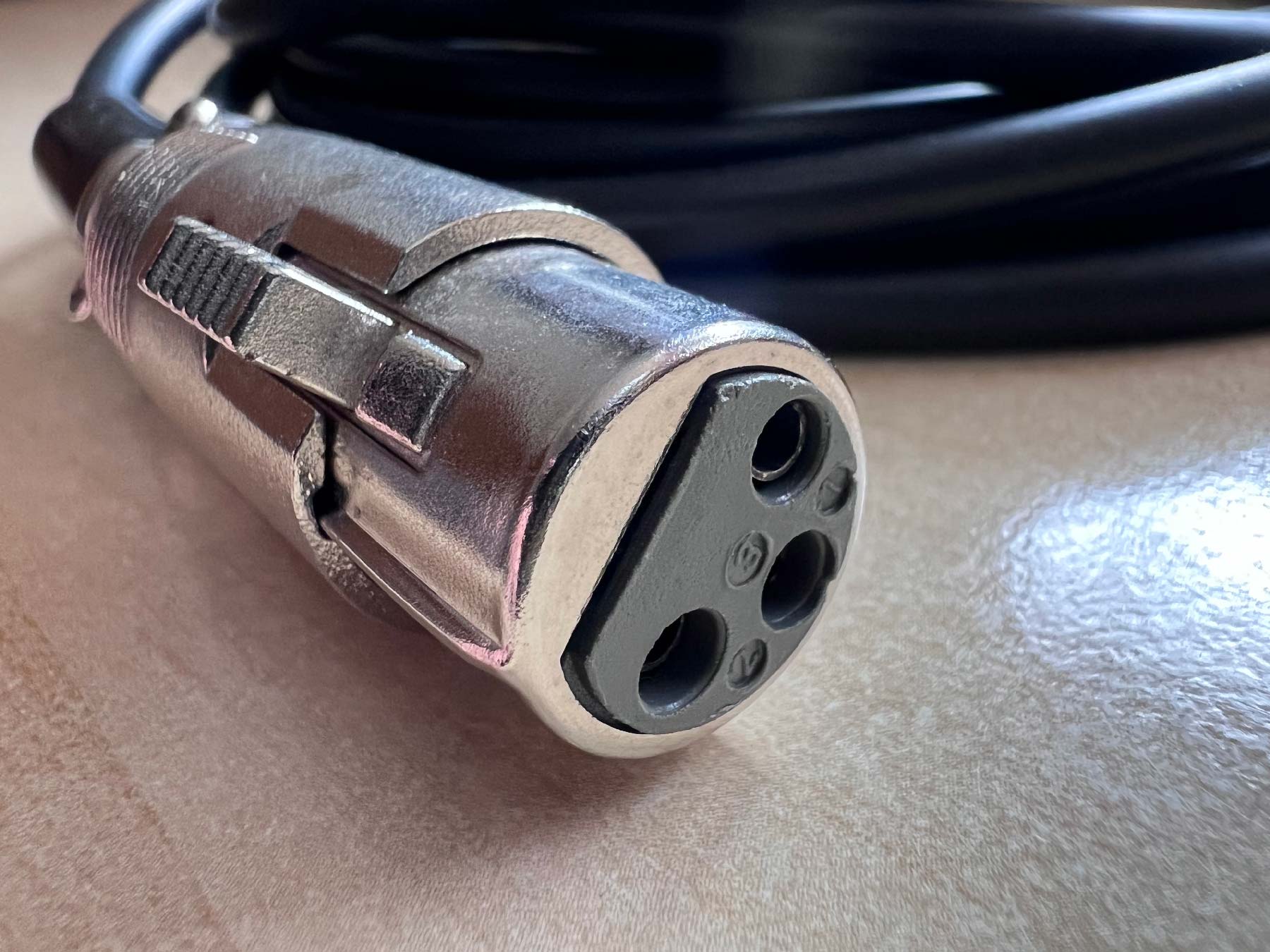What Are XLR Cables
XLR cables are most often found in professional audio setups. You’ll see them used for microphone connections, mixing boards, as well as speaker connections. They’re also common in video and stage lighting. They are easily identifiable by their unique plug and socket design. The most common XLR cable is the three pin style although XLR cables can have a number of pins (up to ten pins).


XLR Name Origin
XLR cables and connectors were originally invented by the Cannon Electric company and released as the Cannon X series. This is where the “X” originates from. Later they added the latching mechanism and called this the Cannon XL. The “L” now added likely for the “latch”. The next evolution of the cable added a rubber coating for insulation. The rubber insulation is the “R”. And there you have it, XLR cables.
Why Use XLR Cables
As mentioned earlier, XLR cables are often used for professional audio applications. One reason XLR cables are used is that they can provide a balanced audio connection between devices. This makes them great for audio recording and production as they reduce external interference and noise.
Another reason XLR cables are used in professional audio is that XLRs can provide power when needed. For example in a situation where a microphone requires power, it can be sent along an XLR cable from the power source like a mixer. This is often referred to as “phantom power”.
Other Uses For XLR Cables
Although XLR cables are popularly used in audio, video, and lighting, they can be used for many other things. XLR cables and connections are great for low-voltage power uses. For example, you might see an XLR cable and/or connection used for charging an electric bike, scooter, or wheelchair. There are also electric battery packs and adapters that switch from a standard wall outlet plug to an XLR connection. They’re a versatile cable and plug option!
